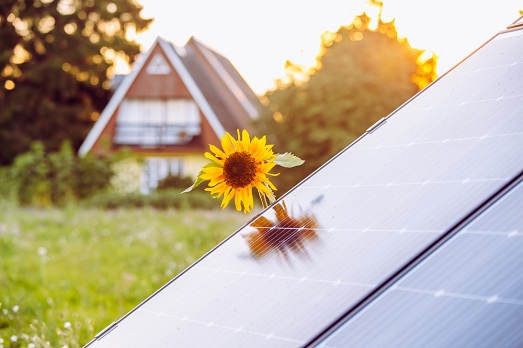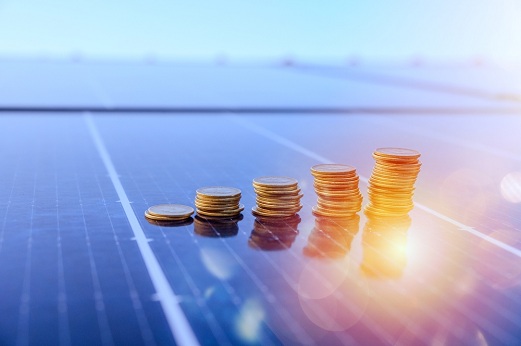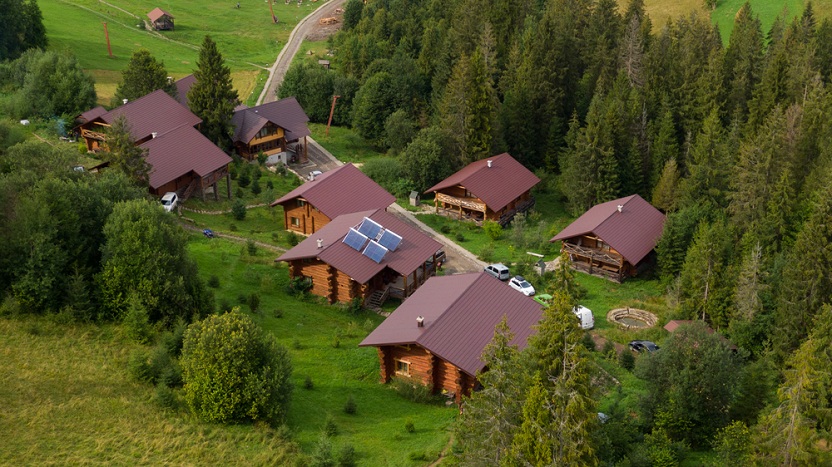Tiny houses and solar panels appear to be a perfect fit.
The main motivations for living in a tiny house are cost savings and lower environmental impacts. These two factors are among the most common motivators for installing solar panels in their homes.
For reasons we'll soon discuss, one could argue that using solar panels to generate electricity is uniquely well-suitable to powering small homes compared to other forms of renewable generation.
However, it's important to keep in mind the fact that solar panels do have some drawbacks. Pay careful attention to each of them and ask yourself if they apply to your current circumstance. After all, even the tiniest of annoyances can be pretty bothersome with tiny houses.
Without further ado, let’s look at all the pros and cons of installing solar panel systems for your tiny house.
Here’s an Overview of the Pros and Cons of Adding Solar Energy to Tiny Homes.
Pros
Cons
Solar Power Advantages for Tiny Homes

Pro-1 Solar Power Systems will Cut Down Your Electricity Bill.
One of the main reasons Americans choose to install solar energy systems is that they know that solar power reduces their electricity bill. Tiny homes already have low energy bills but can eliminate their electricity costs by adding solar power systems.
A small solar panel between 1 kW and 3 kW in size - enough to power most tiny houses - will result in average annual savings of between $200-$800.
The exact savings amount you'll receive depends on several things. We've listed some of the most important.
Some factors that increase solar power savings include:
- High electricity consumption
- Higher energy rates
- Increased sun exposure
- Receiving benefits of net metering
Some factors that reduce solar power savings include:
- Cheap power prices of grid
- Lack of exposure to sunlight
- Low incentives or no incentives from the government and utilities
Pro-2 Solar Power Offers an Excellent ROI (Return On Investment)
For most states, the average payback time for solar power systems is usually between four and nine years.
One of the best parts of living in a tiny house is that it can be achieved with a comparatively small amount of money.
For example, a 3 kW solar power installation costs $5,985 (after considering the 30 percent federal solar tax credits and cost per watt of $2.85).
There are several different ways to finance a solar energy system. Loans, leases, and power purchase agreements (PPAs) are among them.
The exact price you’ll have to pay for it varies depending on several factors, but one of the most important ones is your electricity consumption.
Depending on how much power you use, you may want a larger solar panel or battery pack for your off-grid home, while an energy-efficient tiny house could handle a smaller setup.
Pro-3 Solar Panel Provides Clean, Sustainable, Ecofriendly Energy
One of the priorities for tiny house owners is reducing their environmental footprint, and solar panels are one of the most effective ways to accomplish this.
Solar panels offer clean electricity: They don't emit any greenhouse gases, so they can significantly reduce your carbon footprint. They're not just clean and green; they're also renewable! When we use solar energy, we don't consume any natural resources.
It is also important to note that solar power is the only viable option for renewable electricity in a tiny home. As opposed to alternative renewable energy sources like wind power and hydroelectricity, which require large upfront investments and cannot be used everywhere, solar panels are relatively inexpensive and can be used almost anywhere.
Some critics argue against the benefits of solar energy because of its impact on the environment; however, studies show that the environmental footprint of producing solar panels is far smaller than the emissions they prevent.
Pro-4 Solar Panels will Help You Become More Independent from the Grid
Tiny homes are often quite meticulous about their consumption habits, and they're always looking for ways to become even more self-sufficient.
When it's time for electricity use, the simplest way to get a smaller footprint is to go solar.
Depending on which type of system you select, solar energy can help you lower your dependence on dirty electricity from the electrical utility company, keep you powered up when there is an outage, and even allow you to disconnect completely from the electric utility company.
After disasters like the California wildfires and the Texas winter blackout in February 2021, backup power and decreased dependence on the electric utility system are more appealing than ever.
Here's a brief overview of some of the different levels of energy independence you can achieve using solar power.
1. Cover most of your daytime consumption and export excess energy
A relatively small solar power system can produce enough power for your daily needs and then some.
You can even use the excess power generated by your solar panels to sell back to the local utility company (Net metered programs allow you to sell back any excess energy you produce to your utility company at the retail rate for electricity).
Grid-tied systems are among the least expensive solar energy systems and the most popular ones.
2. Use most of your daytime and nighttime energy, plus reserve some backup power for emergencies.
We must add a solar battery to our system to achieve true self-sufficiency. You may want to consider using lithium-ion or lead-acid batteries for powering your device.
However, any type of solar battery bank can help cover some of your nighttime energy needs or help provide additional storage for an emergency.
3. Don't be dependent on the grid.
It's possible to go completely off the grid, meaning installing a large solar system that generates enough electricity to meet all your energy needs without drawing any electricity from the utility company.
You should know that off-grid systems cost substantially more than grid-tie systems.
Pro-5 Customized Solar Systems can be Built to Fit your Specific Requirements
Solar panels are completely modular; they come in different sizes and shapes depending on how big or small you want them to be.
It's a big advantage because it solves one of the biggest challenges facing tiny homeowners - locating items they need within the limited size of their living spaces. Many small homeowners know the frustration of not having the products they want from their preferred brand.
With solar panels, this isn't an issue at all. Modular systems allow you to use any type of solar panel from any manufacturer by using fewer modules than required for a traditional installation.
By the same logic, you could start with a smaller solar power unit and then expand it later if necessary.
Solar Power Disadvantages for Tiny Homes

Con-1 Initial investment
If you're planning to buy a solar power plant entirely with cash, you must spend several thousand dollars upfront.
For a smaller 1 kW solar power installation, expect to pay between $3,000 and $4,500; for a larger 3 kW solar power installation, you'll be looking at an average price of $7,500. These prices exclude any incentives and rebates available.
Good news! If you're a US taxpayer, you can take advantage of the 30 percent federal solar energy production credits. A 1 kilowatt (kW) system could cost as low as $2,275, and a 3 kW system could be $6,825. If you're located in certain states, additional incentive programs might be available.
These amounts may be too high for you to afford. If that’s the case, you might look into solar loans with small or no down payment requirements.
However, you may need to have good financial standing (credit ratings) before getting approved for one. You could opt for DIY solar panels if you want to save some money, but there are advantages and disadvantages.
Con -2 Solar Battery Prices are High.
We've already discussed how solar battery storage paired with solar panels can help increase energy independence and provide home backup power.
While battery technology has advanced significantly in recent years - for example, Li-Ion batteries have surpassed bulky Lead-acid batteries - they still cost quite a bit.
Lithium-ion batteries, including newer ones such as the 9.6 kWh LG Chem RESU 10H, are powerful, space efficient, and expensive. For the RESU10H system, prices range from $7,000 to $9,000 plus installation fees.
After taking into account the 30 percent federal tax credit, the price for the RESU10H drops to $4,800-$6,300. You can save even more money by taking advantage of state-specific rebates, such as California's SGIP program.
However, we found that even when incentives and rebated prices were considered, solar battery systems still didn't yield the same energy savings as solar panels.
And they were only worthwhile if you were prepared to pay a premium price for battery storage.
Con-3 Requirements for Space
As the name indicates, tiny homes are small. It may sometimes be difficult to put all the solar cells you need on your house's roof.
So, let’s say you use a total of 4,380 kilowatts every year. For the sake of simplicity, let’s just round up to 5,000 kW. If so, then, at an average US electrical rate of 14 cents per kilowatt-hour, the electric bill would be $700.00. If we take California (high costing state) into account, the annual total will come out even more.
To cover that much energy consumption with solar power, you'd need approximately 140 Sq-ft of space if you were using eight solar panels(375 watts), each measuring 17.5 Sq-ft.
Tiny houses have three different methods for overcoming space limitations regarding solar power.
1) You could put the panels on the ground close to the tiny home (although such installations are hard to relocate)
2) Option two is to use as little electricity as possible. If you're using less electricity, then you won't need as many solar panels.
The third option is to use high-performance solar panels, which will produce more energy in less space.
The best way to figure out how much space you’ll require for solar panels is to talk to an experienced solar installer or just go through our easy-to-navigate online calculator. It factors in your current electricity consumption and where you live.
Con-4 The placement of inverters can be complicated.
A solar inverter is an important piece of equipment in any solar system. It converts the DC electricity produced by your solar panel into usable AC electricity for your house.
For your tiny solar-powered house, there are three different types of inverters that you could use:
- String type inverter
- String type inverter plus DC power optimizers
- Microinverters
String inverters are usually the cheapest option for an inverter setup.
However, putting a power strip in a small space can sometimes be complicated. You'll need to consider these things:
- Temperature control: Your inverters perform their best when they're kept in cold conditions - so keep them out of direct sunlight.
- Noise:
- They can cause a very loud humming noise - if this happens near your work, you must keep this in mind.
You may want to put them in an outdoor box facing north or east so that they get less direct sunlight.
If you want to avoid this problem entirely, opt for microinverter systems, which are small inverter units connected to each solar panel. Microinverters are more expensive than regular inverters, which makes them a less popular choice for tiny homeowners.


